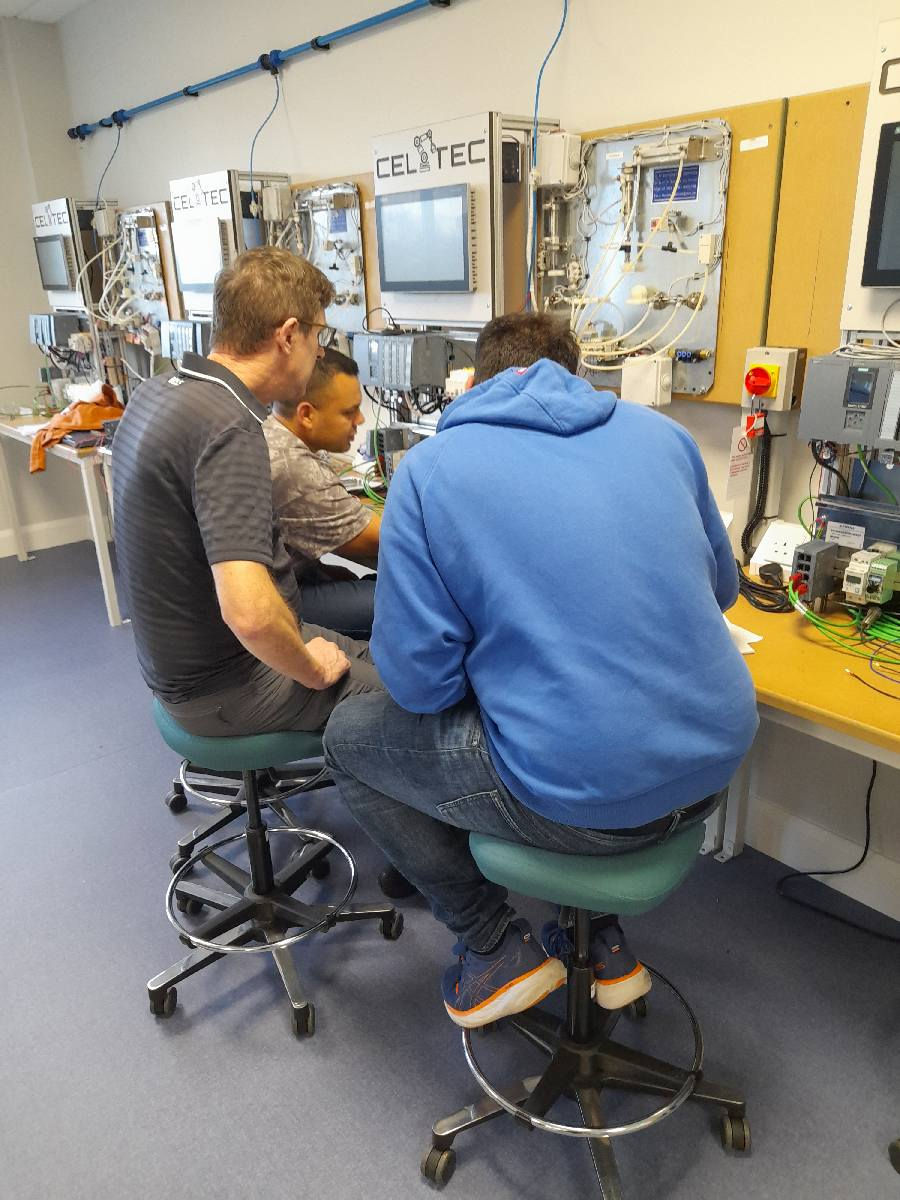PLC Based Automation and Human Machine Interfaces
This course outlines the fundamentals of PLC and Human Machine Interfaces (HMI).

Overview

This course is only available to those currently in employment and partially funded under the Skills to Advance initiative.
Skills to Advance is a national initiative that provides upskilling and reskilling opportunities to employees in jobs undergoing change and to those currently employed in vulnerable sectors. Skills to Advance aims to equip employees with the skills they need to progress in their current role or to adapt to the changing job market. Skills to Advance helps employers identify skills needs and invest in their workforce by providing subsidised education and training to staff.
If you would like more information on this initiative, please email our Enterprise Engagement Team at skills@kwetb.ie and they would be delighted to help.
Course Content
PLC and Human Machine Interfaces (HMI) systems are widely deployed and utilized across various industries to enhance automation, control, and monitoring of systems & processes. PLCs are responsible for managing and controlling systems & processes via the use of sensors, and actuators to perform tasks and control systems.
HMIs furnish operators with real-time data, system diagnostics, and control functions through user-friendly graphical interfaces. Together, PLCs and HMIs enable industries such as manufacturing, pharmaceuticals, food and beverage, and chemicals to improve operational efficiency, ensure safety, and enhance production processes.
The course is 10% theory and 90% interactive using practical based exercises. and is delivered over 2 days.
Areas covered include:
-
Principle of operation of PLCs
-
Fundamentals of HMI design and layout to optimize interfaces to allow effective monitoring & control of systems
-
Essential elements of communication with PLCs and HMIs via TIA (Totally Integrated Automation) using PROFINET.
-
Ladder logic-based programming and HMI setup and interfacing encompassing PLC & HMI integration, data communication, control & monitoring, system optimization
-
Data types & tagging philosophies
-
Fault finding and resetting systems
The software platform is Siemens TIA using Siemens 1500 PLCs with integrated HMIs. The course provides a hands-on approach to the utilization of PLCs using tailored practical exercises based on real-life industry scenarios. These real-life scenarios can be tailored to mimic the learner’s area of employment.
Learning Outcomes
Learn how to
-
Develop core competency in the basic steps required to connect and deploy PLC code to a live system
-
Get PLC and HMIs systems up and running
-
Develop trouble shooting skills to interrogate PLC and HMI systems
-
Determine appropriate solutions to reset faults as they occur
-
Identify and suggest and/or write corrective PLC code and to change/optimise HMI configuration to reduce/eliminate recurring faults
Understand how
-
PLCs and HMI systems are developed and interact with typical scenario deployments
-
To determine appropriate solutions to isolate and identify fault occurring PLC code & HMI configuration.
-
To reset faults and get PLC & HMI system back up and running
Know how to
-
View code to identify possible issues
-
Produce solutions to promote fault reduction
-
Standardise fault finding techniques
Suitability
Due to Skills to Advance (STA) funding, this course is only available to those in employment.
Applicants must have prior technical experience or knowledge and/or exposure to an industrial environment.
Delivery
This course is delivered over 2 full days. These are all physical classes at CELTEC, Celbridge, Co. Kildare where learners will gain hands-on experience in working with PLC's.
Learners must be available for all days as this is an intensive course with much content to cover over this period.
Certification
KWETB Certificate of Completion.
PLC Learners




